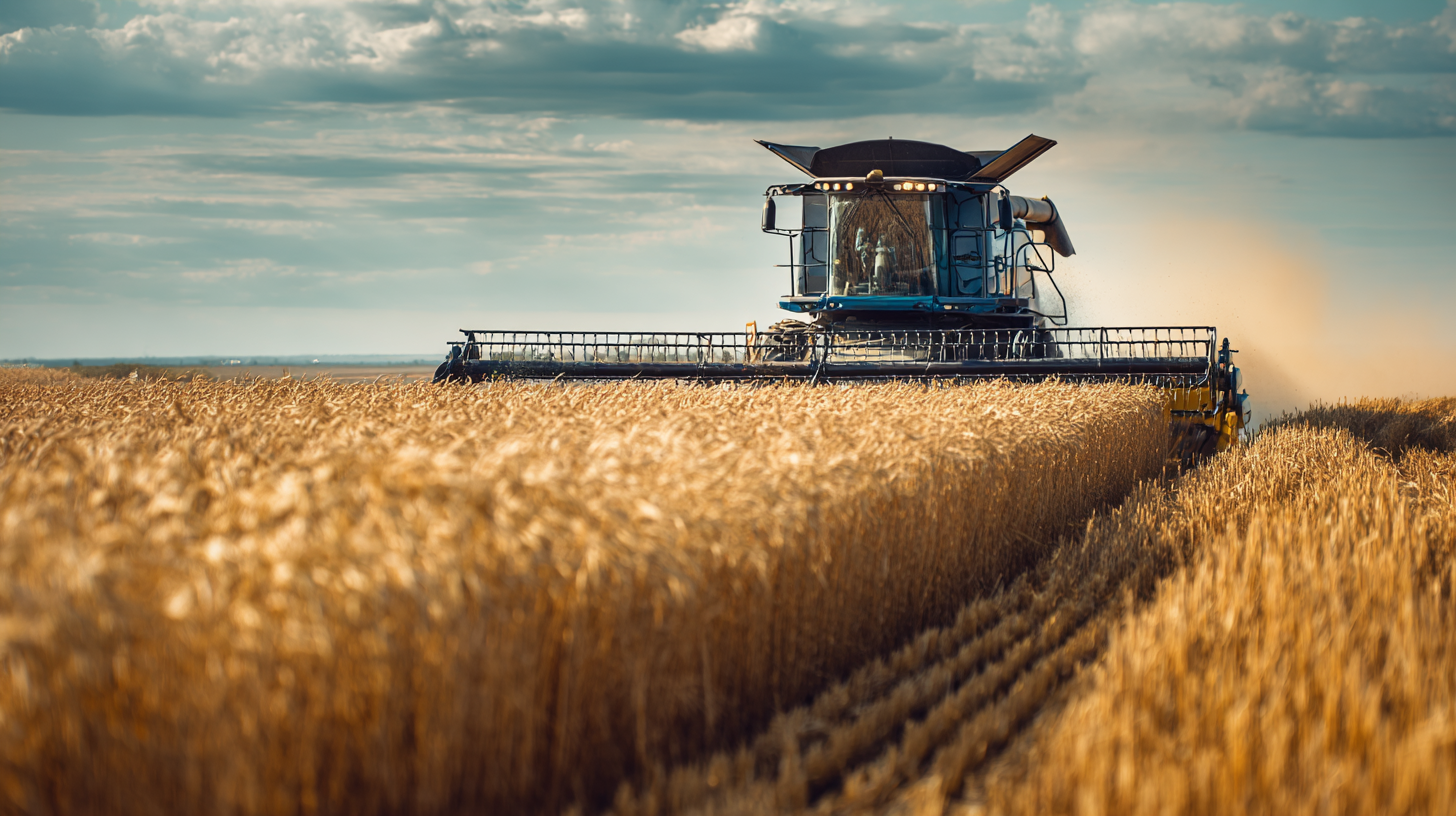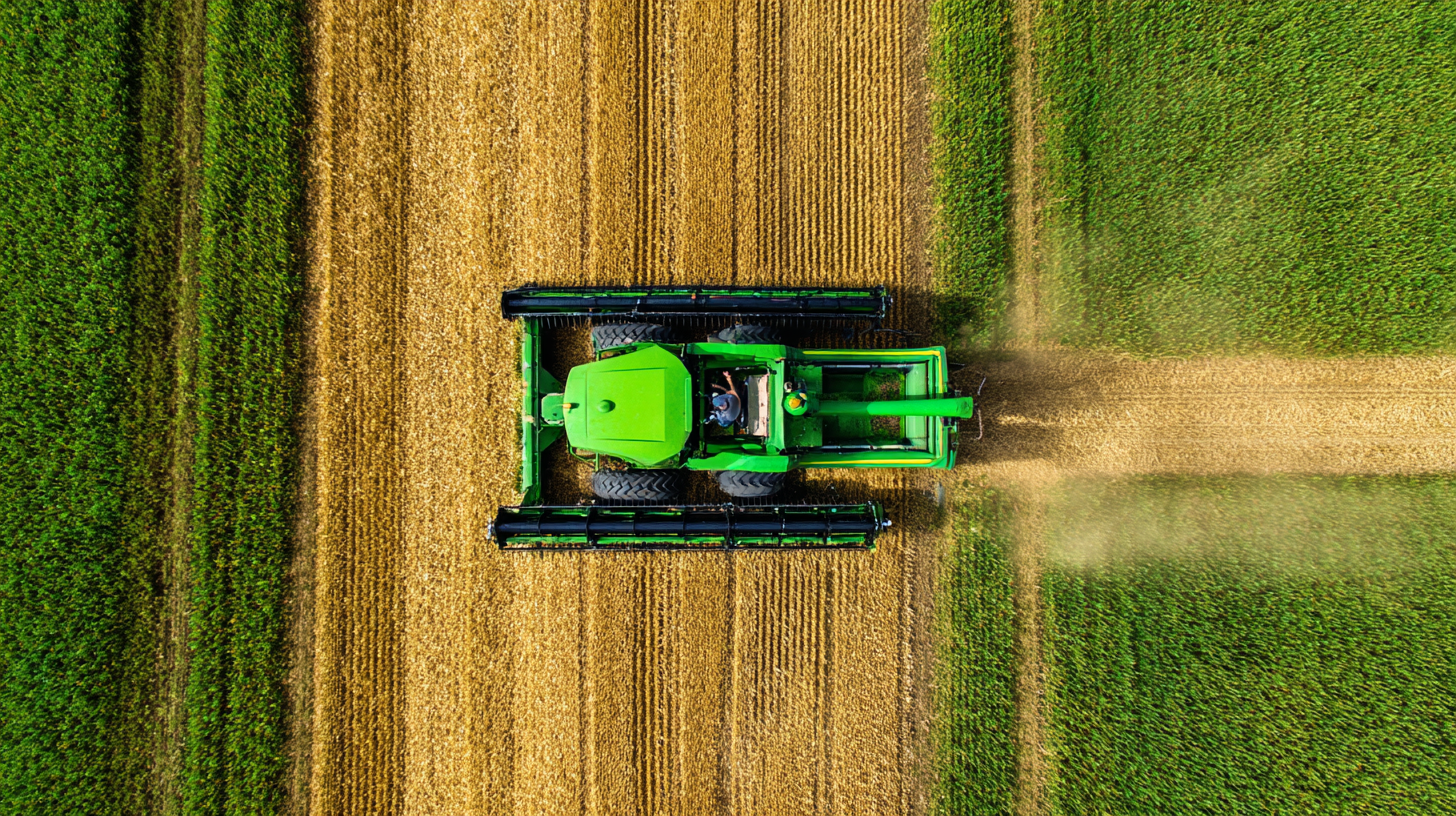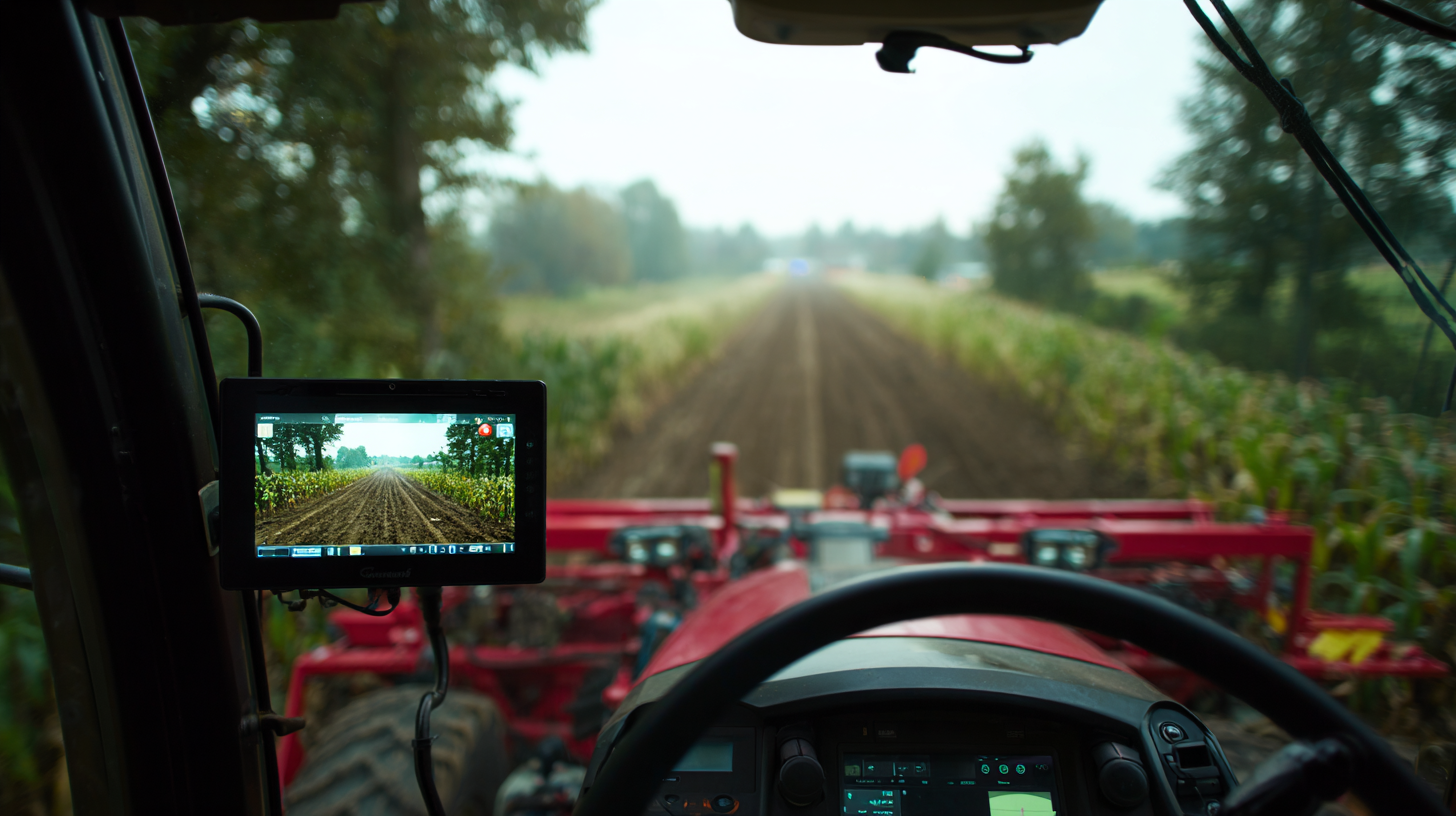Leave Your Message
Agricultural machinery has become a backbone of modern farming, with the agricultural machinery market projected to reach USD 265 billion by 2026, growing at a CAGR of 5.9% from 2021 to 2026 (Mordor Intelligence). In this rapidly evolving sector, the integration of technology and innovation is crucial for efficiency and productivity gains.

Among these innovations, Agricultural Machinery Monitoring Cameras have emerged as essential tools for farmers and operators looking to enhance their operations. These cameras not only provide real-time monitoring of equipment but also enable predictive maintenance, ensuring optimal performance and reducing downtime. As agriculture increasingly adopts precision farming techniques, understanding the latest advancements in Agricultural Machinery Monitoring Cameras is vital for any stakeholder aiming to stay ahead in this competitive landscape.
In this blog, we will explore the 10 best innovations in this field that every modern farmer should know.
As the agricultural sector embraces modern technologies,
monitoring cameras are at the forefront of innovation, transforming how farmers manage their machinery and crops.
The integration of advanced camera systems into agricultural machinery provides real-time data and insights, enabling farmers to make informed decisions that enhance productivity and efficiency.
For instance, AI-powered cameras can identify issues such as equipment malfunctions or crop diseases early on, allowing for timely interventions that can save both time and resources.
Moreover, emerging trends in agricultural machinery monitoring cameras are focusing on connectivity and automation.
Systems equipped with IoT capabilities allow farmers to monitor their equipment remotely, reducing the need for physical checks and enabling better resource management.
Additionally, the use of drone technology to survey fields and monitor crop health from above is gaining momentum, offering a comprehensive view of agricultural operations.
These innovations are not just enhancing monitoring capabilities; they are also paving the way for smarter, more sustainable farming practices that align with the needs of modern agriculture.
In the realm of agricultural technology, enhancing crop monitoring accuracy is pivotal for boosting yield and ensuring sustainable farming practices. With the advent of innovative machinery monitoring cameras, the industry is witnessing significant improvements in image resolution, which plays a vital role in precision agriculture. According to a report by MarketsandMarkets, the agricultural drones market is expected to reach $4.8 billion by 2025, driven largely by advancements in imaging technology that allow for real-time crop health analysis. High-resolution cameras integrated into these systems provide detailed imagery that enables farmers to detect issues such as nutrient deficiencies, pest infestations, and disease outbreaks at an early stage.
A comparative analysis of image resolution highlights the disparities among various agricultural monitoring cameras. For instance, cameras that offer resolutions higher than 20 megapixels can capture more than 10 times the detail of standard cameras, enhancing the farmer's capability to make informed decisions. A study from the International Journal of Applied Research in Agricultural Engineering found that using high-resolution imaging can lead to a 30% increase in crop management efficiency. This capability not only empowers farmers to react swiftly to changes in crop conditions but also supports data-driven strategies that minimize resource wastage and optimize overall productivity, setting a new standard for agricultural practices in the digital age.
| Camera Model | Image Resolution (MP) | Field of View (degrees) | Connectivity Type | Features |
|---|---|---|---|---|
| Model A | 12 | 90 | Wi-Fi | Night Vision, Weatherproof |
| Model B | 10 | 120 | Ethernet | PTZ, HD Streaming |
| Model C | 16 | 110 | 4G LTE | AI Detection, Remote Access |
| Model D | 8 | 85 | Wi-Fi | Water Resistant, Motion Detection |
| Model E | 20 | 150 | Wi-Fi, Bluetooth | 360° View, Video Recording |
The agricultural industry is undergoing a significant transformation due to the integration of AI technology in surveillance and data analysis. According to a report by MarketsandMarkets, the smart agriculture market is projected to reach $22 billion by 2025, driven largely by advancements in monitoring systems. These innovations, particularly in camera technology, enable farmers to monitor crops and livestock in real-time, providing critical data that can enhance productivity and efficiency.
AI-powered cameras equipped with machine learning algorithms can analyze footage to detect pests, assess crop health, and even predict yield outcomes. This facilitates timely interventions, reducing potential losses. A study by AgFunder underscores that farms implementing such technologies can increase yield by up to 15% while decreasing resource consumption by over 20%.
Tip 1: Consider investing in multi-spectral cameras that provide comprehensive data on plant health and soil moisture levels, allowing for targeted resource application.
Furthermore, these monitoring systems can integrate seamlessly with farm management software, enabling data-driven decision-making. By leveraging data analytics, farmers can track performance trends and optimize operations accordingly.
Tip 2: Utilizing cloud-based platforms for data storage can enhance accessibility and collaboration among farm management teams, leading to improved operational strategies.
As the agricultural landscape continues to evolve, embracing these AI advancements will be crucial for staying competitive and sustainable in a rapidly changing environment.

The integration of Internet of Things (IoT) technologies in agricultural machinery has revolutionized the way farmers monitor their operations. With wireless connectivity solutions, farmers can now keep a constant eye on their machinery, ensuring optimal performance and immediate response to potential issues. By employing sensors and cameras connected to the internet, agricultural equipment can transmit real-time data, such as operational status, engine performance, and maintenance needs, directly to a farmer’s smartphone or computer.
This real-time monitoring capability not only enhances efficiency but also significantly reduces downtime. Farmers are able to predict potential failures before they happen, allowing for proactive maintenance and minimizing disruption during crucial planting and harvesting periods. Moreover, the accessibility of data analytics provides insights into machinery usage patterns, enabling better decision-making regarding equipment uptime and productivity. As the agricultural industry continues to evolve, the impact of IoT-driven wireless solutions in monitoring machinery remains a game-changer for farmers seeking to optimize their operations and increase yield.
In the rapidly evolving landscape of agricultural technology, advanced monitoring cameras have emerged as pivotal tools for enhancing crop yields and operational efficiency. These innovations provide farmers with real-time insights into crop health, soil conditions, and overall farm management. For instance, camera systems equipped with remote sensing capabilities enable the detection of pest infestations and nutrient deficiencies well before they become visible to the naked eye. This early intervention leads to targeted treatments, reducing resource waste and ultimately boosting productivity.
Case studies demonstrate the proven benefits of implementing such monitoring solutions. Farms using advanced camera technology report significant improvements in yield and reduced operational costs. By analyzing data collected from these cameras, farmers can make informed decisions about irrigation schedules and fertilizer applications. In one notable instance, a farm that adopted a comprehensive camera monitoring system observed a 30% increase in yield during its first growing season. This trend highlights not only the direct impact of technology on agriculture but also its role in promoting sustainable practices by minimizing inputs and maximizing outputs.







